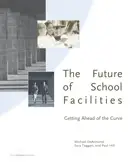Forward-thinking educators usually accept the idea that tomorrow’s classrooms will look different than today’s. Instead of large schools, 52-minute class periods, and rambling curricula, they foresee classrooms and schools that are personalized and focused; they look for teachers that will emphasize mastery over breadth. Whether these aspirations are realized now or years down the road, they are unconstrained by the current routines found in America’s schools. Innovative educators realize that industrial-age assumptions about learning are obsolete. Tomorrow’s classrooms will be based on something different.
But all too often, these same people see school facilities as a fixed frame of reference. This does not have to be the case. Instead of assuming that the future of learning has to take place in buildings we happen to have now, districts can let innovations in instruction and learning drive how they provide, design, and use school buildings. With this goal in mind, this paper looks at five trends in education and what they imply about the kinds of buildings and spaces districts will need for tomorrow’s schools.






